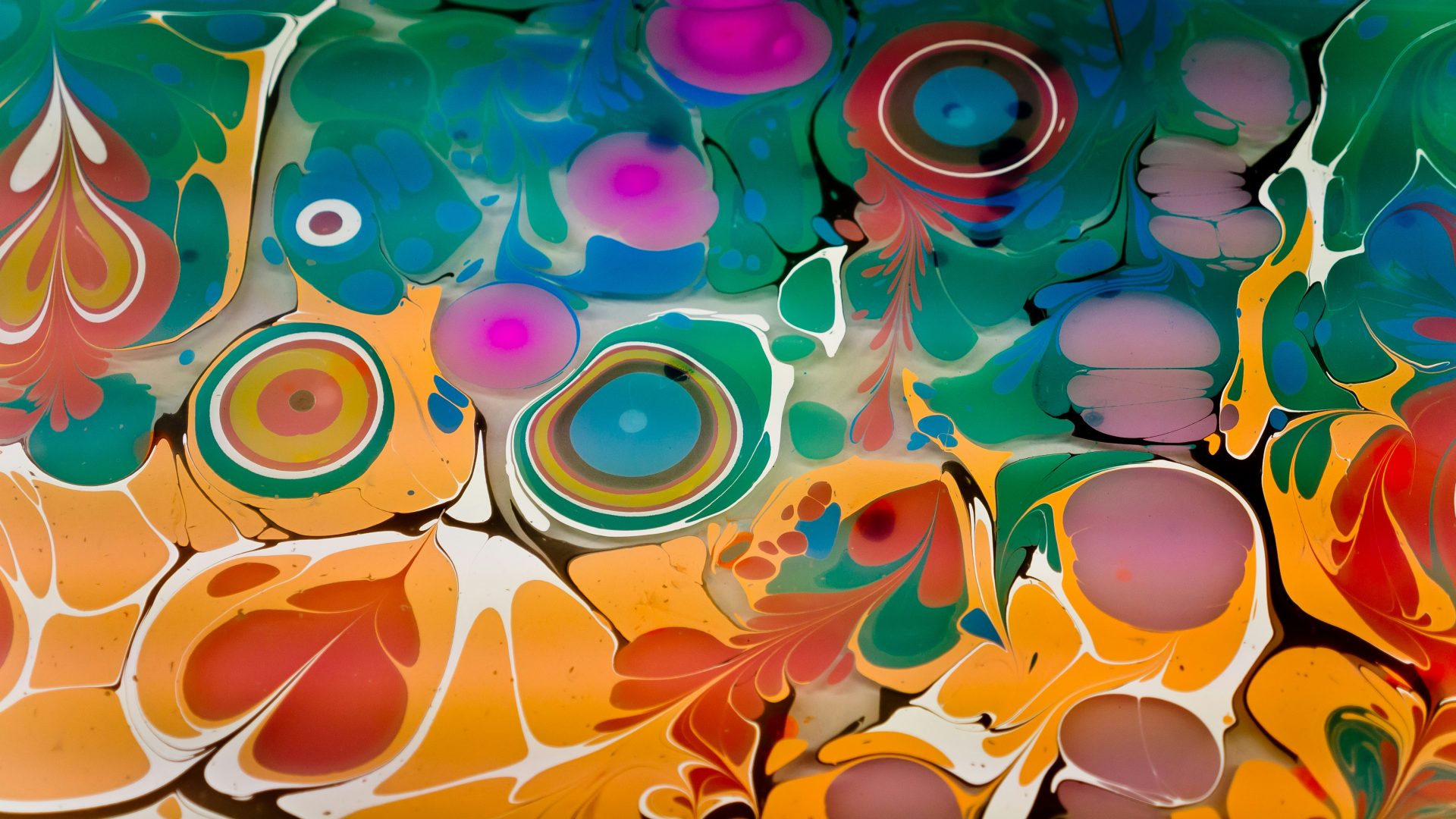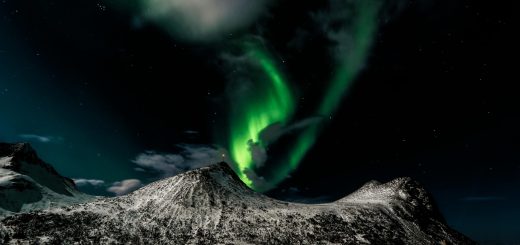How Did the Age of Exploration Shape the Globe?

Before diving in, please note: This post is for informational purposes only. If you’d like to know more about how we approach topics, feel free to check out our friendly Disclaimer Page.
Hey there, amazing readers! 🖐️ Just a quick note: yes, we know there are a lot of ads here. Trust us, we get it—it’s not the prettiest look, but they help us keep this blog alive and kicking. Those pesky little ads cover the costs of all the behind-the-scenes magic, from hosting and tech stuff to creating content we hope you’ll love.
We’re committed to delivering quality posts, and your support (even just sticking around despite the ads) means everything to us. So, bear with us, and thanks for helping us keep the good vibes rolling. Now, on to the fun stuff! 😉
TRANSLATE BUTTON AT THE END OF THE ARTICLE
A Quick Overview
The Age of Exploration was a thrilling chapter in human history, filled with adventure, discovery, and unexpected consequences.
From the late 15th to the early 17th century, intrepid explorers set sail across vast oceans, driven by a thirst for knowledge, wealth, and adventure.
This period reshaped the globe in ways that still resonate today.
It opened new trade routes, transformed cultures, and led to the colonization of vast territories.
Let’s take a journey through this fascinating era and explore how it shaped our world.
The Age of Exploration: A Gateway to New Horizons
The Age of Exploration emerged during a time when Europe was beginning to look outward.
The fall of Constantinople in 1453 cut off traditional trade routes to Asia, prompting European nations to search for new paths to the East.
What a time to be alive!
With advancements in map-making and shipbuilding, this era became a springboard for explorers.
Countries like Spain and Portugal took the lead.
They funded expeditions to find faster routes for trade.
The excitement was palpable.
Imagine the ships setting sail, filled with hopes and dreams.
Every voyage risked the unknown, but the potential rewards were enormous.
This period also marked a shift in worldview.
People began to see themselves as part of a larger network.
They started to understand that cultures, goods, and ideas could flow across oceans.
This newfound perspective laid the groundwork for globalization.
The realization that the Earth was round added to the intrigue.
The possibility of reaching India by sailing west captured imaginations.
This bold thinking defined the spirit of the Age of Exploration, pushing the boundaries of what was possible.
Ultimately, this age was not just about exploration; it was about transformation.
The world we know today—its cultures, economies, and relationships—was significantly shaped by the voyages of these daring explorers.
Meet the Explorers: Bold Adventurers of the Seas
The Age of Exploration was marked by some truly remarkable characters.
Think of Christopher Columbus, who, in 1492, set out to find a direct route to Asia but instead stumbled upon the Americas.
His journey was nothing short of a revelation.
Then we have Vasco da Gama, who successfully navigated around Africa to reach India in 1498.
His journey opened direct sea trade routes to Asia.
Talk about a game changer!
The spice trade would never be the same.
Ferdinand Magellan deserves a mention too.
He led the first expedition to circumnavigate the globe.
His voyage taught us that the Earth was indeed round, and it linked distant cultures in unprecedented ways.
Imagine the stories he brought back!
These explorers weren’t just brave; they were determined.
They faced storms, starvation, and navigational challenges.
Their stories inspire us even today.
They remind us that adventure often comes with risks.
But the rewards can be monumental.
Many of these explorers operated under royal patronage.
Kings and queens saw them as instruments of their ambitions.
The explorers were the rock stars of their time, celebrated for their daring feats.
Some explorers, however, fell short of our modern moral standards.
Their journeys often led to the exploitation of indigenous peoples.
This darker side of exploration has sparked critical conversations about ethics and responsibility in the context of discovery.
The Quest for Trade: Spices, Silk, and Treasures
Why were these explorers risking it all?
The answer lies in trade.
Spices, silk, gold, and other treasures were in high demand back in Europe.
The Middle Ages had fueled a hunger for exotic goods, and the profit potential was enormous.
Spices were particularly coveted.
They were used not just for flavor but also for preservation and medicine.
Imagine a world without pepper or cinnamon—what a dull culinary landscape that would be!
Merchants were eager to control these valuable trade routes.
Silk, too, had its allure.
The fabled Silk Road had connected East and West for centuries.
However, by the time of the Age of Exploration, that route was fraught with danger.
Finding a sea route to Asia became a top priority.
The riches that could come from these voyages were staggering.
Successful expeditions often led to the establishment of trade monopolies.
The wealth generated transformed economies and altered power dynamics across continents.
The European thirst for trade didn’t just fuel exploration; it also impacted entire societies.
As new goods flowed in, so did new ideas and innovations.
The influence of foreign cultures began to seep into European life.
This quest for trade also paved the way for the mercantilist policies of emerging nations.
Countries began to build empires, exploiting foreign lands to enhance their own wealth.
It was a time of bold ambitions, driven by the promise of riches.
Discovering New Lands: Mapping the Uncharted World
Mapping was a crucial part of the Age of Exploration.
Explorers did more than just sail; they charted new territories.
Their maps laid the groundwork for future voyages and trade routes.
Before this era, maps were often inaccurate or based on hearsay.
But explorers brought back detailed knowledge of the lands they encountered.
This new information was revolutionary.
Cartographers began to create more precise maps, reflecting the world as it truly was.
Imagine the thrill of opening a map that revealed lands previously unknown!
The Atlantic Ocean was no longer a vast expanse of uncertainty; it became a conduit for connection.
The discovery of the Americas dramatically changed European maps.
Countries had to adapt their understanding of geography.
With each new expedition, the maps grew, marking the expansion of European influence.
These maps weren’t just practical tools; they became symbols of power.
Nations flaunted their discoveries, claiming new territories.
This sparked competition among European powers, setting the stage for future conflicts.
Moreover, the act of mapping itself was a form of claiming territory.
By documenting these lands, explorers asserted ownership.
It was a way of saying, "This is ours now." The implications of this were profound and often tragic.
As maps improved, so did navigation.
Sailors gained more confidence to sail further, opening even more doors to exploration.
It was a domino effect, fueled by curiosity and ambition.
Cultural Exchanges: A Melting Pot of Ideas and Goods
The Age of Exploration was not just about land; it was also about the exchange of cultures.
As explorers traveled, they encountered new civilizations, and these interactions led to exciting exchanges.
Trade brought not just goods but also ideas.
Think about the introduction of new crops to Europe, like potatoes and tomatoes, which changed diets and agricultural practices.
These exchanges enriched lives across continents.
Language and culture melded as well.
With every encounter, the stories, beliefs, and practices of different peoples mingled.
It was like a grand potluck, where everyone brought something unique to the table.
However, this mixing of cultures wasn’t always harmonious.
The arrival of Europeans often disrupted indigenous ways of life.
The clash of civilizations led to conflicts, misunderstandings, and cultural erosion.
Some explorers took detailed notes about the cultures they encountered.
These observations contributed to the development of anthropology and understanding of human societies.
It was the beginning of a deeper curiosity about what it means to be human.
Religious beliefs also played a role in these cultural exchanges.
Missionaries often accompanied explorers, eager to spread Christianity.
This added another layer of complexity to interactions between cultures.
The Age of Exploration was truly a double-edged sword.
On one hand, it brought a wealth of new ideas and goods; on the other, it resulted in profound disruptions.
The legacy of this era continues to influence cultural dynamics today.
The Impact on Indigenous Peoples: Changes and Challenges
While exploration opened new worlds for Europeans, it brought significant challenges to indigenous peoples.
The arrival of Europeans was often marked by violence, disease, and exploitation.
When Columbus arrived in the Caribbean, he encountered the Taino people.
Initially, there was curiosity and wonder.
However, it quickly turned tragic.
The Taino suffered from violence and diseases brought by the Europeans.
It was a devastating blow to their civilization.
As explorers claimed lands, indigenous populations were often displaced.
The push for resources and land led to conflicts that changed the landscape of entire regions.
Imagine the fear and uncertainty felt by those whose homes were suddenly claimed.
Trade had its own set of complications.
While some indigenous groups engaged positively with Europeans, others were exploited.
The fur trade, for instance, transformed economies but also disrupted traditional ways of life.
Cultural practices were often dismissed or suppressed.
European explorers and settlers frequently viewed indigenous cultures as inferior.
This led to a loss of identity for many communities, with traditions fading into history.
Yet, there were also stories of resilience.
Indigenous peoples adapted to new realities, finding ways to negotiate and survive.
The blending of cultures sometimes led to rich new traditions, showcasing human adaptability.
Today, we recognize the complex legacy of the Age of Exploration.
It’s essential to acknowledge the narratives of indigenous peoples, to understand the full picture of history.
Their stories remind us of the profound impact exploration had on human lives.
Colonization: The Birth of New Empires and Nations
As exploration progressed, colonization followed closely behind.
European powers began to establish colonies, leading to the rise of vast empires.
This was not just about exploration; it was about domination and control.
Spain and Portugal were the early leaders in colonization efforts.
They established territories in the Americas, the Caribbean, and Asia.
The Treaty of Tordesillas (1494) divided the newly discovered lands between these two powers.
The British, French, and Dutch soon joined the race.
Each nation sought to expand its influence, vying for resources and strategic positions.
The competition fueled a frenzy of colonization that transformed global dynamics.
Colonies became vital sources of wealth for European nations.
They provided raw materials and new markets for goods.
This economic model fed the ambitions of powerful nations, leading to a focus on imperialism.
However, this pursuit of empire came at a heavy cost.
Indigenous peoples were forced into subjugation.
They faced violence, cultural eradication, and exploitation.
The consequences of colonization are still felt today.
The establishment of colonial governments often disregarded local customs and governance structures.
European powers imposed their own systems, leading to political strife and social upheaval.
Yet, the legacy of colonization is not entirely negative.
Some colonies became melting pots of cultures, where new identities emerged.
The interactions led to rich tapestries of language, food, and traditions that continue to thrive today.
Understanding colonization is essential for grasping modern global relationships.
It shapes narratives around identity, heritage, and power.
The echoes of this past still resonate in our world, influencing international dynamics.
Advancements in Navigation: Tools That Changed Travel
The Age of Exploration saw remarkable advancements in navigation.
Explorers were not just brave adventurers; they were also innovators.
The tools they developed changed the face of travel.
One of the most significant inventions was the astrolabe.
This ancient tool allowed sailors to determine their latitude by measuring the angle of stars.
It was a game changer for navigation.
The magnetic compass also played a crucial role.
It provided guidance even when the stars were obscured.
This tool helped sailors chart their courses with greater accuracy.
Maps improved tremendously during this time.
They became more detailed and reliable, reflecting the lands explorers discovered.
Cartographers began to use new techniques, such as triangulation, to enhance their accuracy.
Sailing techniques evolved as well.
The lateen sail allowed ships to navigate with greater agility.
This innovation made it possible to sail against the wind, opening new routes.
Shipbuilding experienced a renaissance, too.
The introduction of the caravel—a small, highly maneuverable ship—allowed for exploration into shallower waters.
These vessels became the workhorses of exploration.
With these advancements in navigation, explorers gained the confidence to venture into the unknown.
They pushed boundaries, discovering lands that would change the course of history.
It was a thrilling time of experimentation and discovery.
The impact of these navigational tools went beyond exploration.
They laid the foundation for global trade networks.
The techniques developed during this age continue to influence navigation even today.
The Role of Technology: Ships That Conquered the Oceans
When we think of the Age of Exploration, we must consider the ships that made it all possible.
These vessels were marvels of their time, equipped with the latest technologies.
They were the brave warriors of the sea.
The caravel, mentioned earlier, was one of the most significant developments.
Its design allowed for long voyages and exploration of new territories.
The combination of speed and maneuverability made it a favorite among explorers.
The galleon was another important innovation.
These larger ships could carry more cargo, making them ideal for long-distance trade.
They became the workhorses of the Spanish Empire, transporting goods across the oceans.
Shipbuilding techniques advanced rapidly.
Explorers utilized oak for durability and incorporated new designs that enhanced stability.
The craftsmanship involved was remarkable, ensuring these vessels could withstand the harshest conditions.
Moreover, the introduction of cannons and other weaponry equipped ships for defense.
This was important in an age where competition among nations was fierce.
The seas became battlegrounds, and having an armed ship was essential for survival.
The combination of skilled navigators and advanced ships opened the oceans to exploration like never before.
The logistics of long voyages became manageable, and explorers felt empowered to venture into unknown waters.
However, it’s essential to remember that these ships were also vessels of conquest.
They carried not just explorers but armies as well.
The technology that facilitated exploration also facilitated colonization, leading to complex legacies.
The advancements in shipbuilding and technology during this age laid the groundwork for future maritime ventures.
The influence of these innovations continues to shape the shipping industry today.
The Spread of Christianity: Faith Across the Seas
The Age of Exploration was not just about trade and land; it also involved the spread of Christianity.
Many explorers saw their journeys as a divine mission.
They believed it was their duty to convert indigenous peoples to Christianity.
Missionaries often accompanied explorers.
They saw new lands as opportunities to expand their faith.
The journeys weren’t just about seeking gold; they were also about saving souls.
The impact of this missionary work was profound.
As Europeans established colonies, they built churches and schools.
They introduced European religious practices in regions where traditional beliefs thrived.
However, this spread of Christianity was not without conflict.
Indigenous beliefs were often dismissed or actively suppressed.
The clash of religions led to significant cultural upheaval.
Some indigenous groups resisted conversion, leading to tensions.
Others blended their beliefs with Christianity, creating syncretic practices that reflect a fusion of cultures.
The resilience of indigenous peoples often shone through, even in the face of adversity.
Notably, figures like Bartolomé de las Casas emerged during this time, advocating for the rights of indigenous peoples.
His work highlighted the often-overlooked consequences of exploration and colonization.
The spread of Christianity also brought about the establishment of new religious institutions.
Churches became centers of community life, bridging gaps between cultures.
They played significant roles in shaping social structures in the colonies.
Today, the influence of this religious expansion can still be seen.
Many regions, particularly in Latin America, bear the marks of this legacy.
The blending of cultures and faiths has created rich, diverse traditions that continue to thrive.
Economic Shifts: Trade Routes That Changed Commerce
The Age of Exploration transformed global economies.
As explorers mapped new territories, they opened trade routes that had far-reaching impacts.
The flow of goods and wealth changed the dynamics of commerce.
The establishment of new trade routes between Europe, Africa, Asia, and the Americas created a global trading network.
These connections revolutionized how goods were exchanged, leading to a newfound prosperity.
The spice trade became a cornerstone of this new economy.
Spices like nutmeg and cloves commanded high prices in Europe.
The demand for these exotic goods fueled competition among European powers to secure trade routes.
The introduction of American crops, such as corn and potatoes, drastically altered European diets.
These foods became staples and contributed to population growth.
Imagine the impact of spuds on European tables!
The practice of mercantilism emerged during this time.
Nations sought to maximize their wealth through trade surpluses.
Colonies became vital assets, providing resources and markets for the mother country.
However, this economic shift came with ethical dilemmas.
The demand for labor led to the establishment of the transatlantic slave trade.
Millions of Africans were forcibly taken to work on plantations in the Americas, a dark chapter in history.
The influx of wealth from colonies also led to new social classes in Europe.
A wealthy merchant class emerged, challenging traditional nobility.
The economic landscape was shifting, and power dynamics were changing.
As trade routes expanded, so did the influence of European nations.
They began to dominate global trade, shaping international relations.
The consequences of this transformation continue to resonate in today’s interconnected economies.
Lasting Legacies: How Exploration Shaped Today’s World
The Age of Exploration left an indelible mark on our world.
Its legacies are woven into the fabric of modern society.
From culture to economy, the influences are profound and varied.
Firstly, the geographical knowledge that emerged during this time shaped our understanding of the planet.
The maps created by explorers laid the groundwork for modern cartography.
We owe much of our global navigation to their adventurous spirit.
Culturally, the exchange of ideas and goods transformed societies.
The mingling of cultures led to the creation of hybrid identities.
Today, we celebrate this diversity in our food, music, and traditions.
Economically, the global trade networks established during the Age of Exploration laid the foundation for modern capitalism.
We live in a world where goods and services cross borders with ease, thanks to the pioneering efforts of those early explorers.
Furthermore, the historical narratives of this period prompt critical discussions about colonialism and its impacts.
Today, there’s a growing awareness around the importance of acknowledging indigenous histories and rights.
Education has also been influenced.
The Age of Exploration sparked interest in science, navigation, and geography.
These fields have evolved, but the curiosity that drove explorers remains a guiding light in education.
In terms of religion, the spread of Christianity and its blending with indigenous beliefs created unique spiritual practices.
The legacy of this syncretism is still visible in many cultures around the world today.
Finally, the Age of Exploration serves as a reminder of human resilience and ambition.
It shows us that the quest for knowledge and connection is part of our shared humanity.
As we explore new frontiers in technology and space, we continue to embody the spirit of those early explorers.
Conclusion
The Age of Exploration was a pivotal period that shaped the globe in countless ways.
It was an age of adventurers, dreams, and challenges.
From trade to cultural exchanges, the impacts are still felt today.
We owe much to the explorers who dared to venture into the unknown.
Their legacies remind us of the power of curiosity and the complexities of human interactions.
As we navigate our modern world, we can draw inspiration from this era, embracing both its achievements and the lessons learned from its more difficult truths.

The Enlightenment Journey is a remarkable collection of writings authored by a distinguished group of experts in the fields of spirituality, new age, and esoteric knowledge.
This anthology features a diverse assembly of well-experienced authors who bring their profound insights and credible perspectives to the forefront.
Each contributor possesses a wealth of knowledge and wisdom, making them authorities in their respective domains.
Together, they offer readers a transformative journey into the realms of spiritual growth, self-discovery, and esoteric enlightenment.
The Enlightenment Journey is a testament to the collective expertise of these luminaries, providing readers with a rich tapestry of ideas and information to illuminate their spiritual path.
Our Diverse Expertise 🌟
While our primary focus is on spirituality and esotericism, we are equally passionate about exploring a wide range of other topics and niches 🌍📚. Our experienced team is dedicated to delivering high-quality, informative content across various subjects ✨.
To ensure we provide the most accurate and valuable insights, we collaborate with trusted experts in their respective domains 🧑🏫👩🏫. This allows us to offer well-rounded perspectives and knowledge to our readers.
Our blog originally focused on spirituality and metaphysics, but we’ve since expanded to cover a wide range of niches. Don’t worry—we continue to publish a lot of articles on spirituality! Frequently visit our blog to explore our diverse content and stay tuned for more insightful reads.





